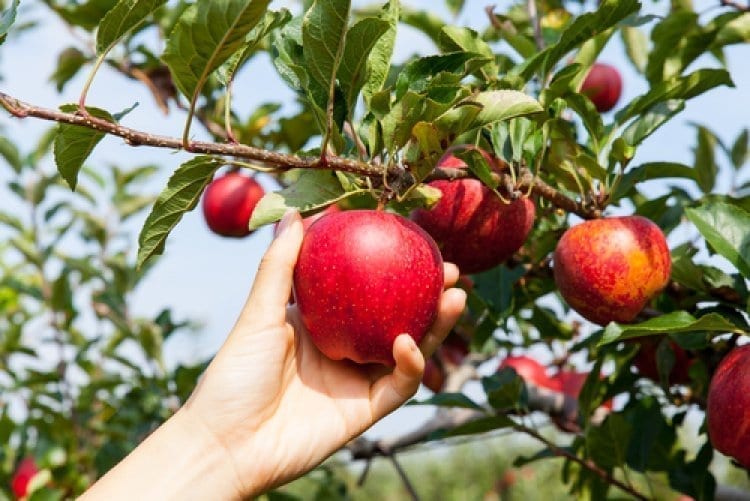
The first Mishna in the gemara of Rosh Hashana informs us of various 'new years'. These are times of the year that are considered the beginning of the annual calendar with regard to various laws. The Rosh Hashana for trees is the fifteenth day of the month of Shvat, more famously known as 'Tu B'Shvat'.
This day is considered a festive day, therefore the prayer of tachanun (supplication for forgiveness) is not recited. Further, there is the universal custom to make blessings on, and, eat a variety of fruit. The overall focus of the day is to thank HaShem for the gift of trees to the world and to recognize the wonders of nature.
Rav Yaakov Weinberg zt”l asks, why is there no similar concept of a celebratory day for the 'birthday' of vegetables? There is also a date for the new year for vegetables which has halachic (legal) ramifications. That being the case, why is there no festivity on their 'birthday'?
He explains that there are numerous remarkable aspects about nature, that merit contemplation of the wonder of creation. Many 'miracles' occur with regard to both vegetables and trees. For example, the taking root of a seed and its development into a tree, bush or vegetable is truly miraculous – it is only its regularity that takes away from our wonder at this astonishing occurrence. Moreover, the process of photosynthesis that enables plant life to use the energy from the sun is another miracle that demonstrates the complexity of nature.
However, there is an additional miracle that is found specifically with trees. The process of nourishment for a vegetable is relatively straightforward; it is drawn directly from the ground into the vegetable itself. In contrast, the process of nourishment for a tree is far more complicated. The tree needs to be able to take the nourishment from the ground, draw it all the way up the trunk to its branches, and then to the fruit.
Rav Weinberg explains that every stage in a plant's development is a miracle, therefore we are instructed to be thankful for HaShem's numerous gifts in this area. Since trees are subject to more miracles than vegetables, it is appropriate that their 'birthday' is considered more worthy of celebration than that of vegetables.
Rav Weinberg's explanation reminds us of the importance of focusing on the details of creation – it is very easy to ignore the numerous miraculous aspects of all of the natural world. Tu B'Shvat awakens us to the importance of appreciating HaShem's gifts, particularly in the form of fruit. It is instructive to offer one small example of this, in order to arouse us to take note of the numerous miracles that surround us.
When a person eats a peach, he pays little attention to the hard stone that lies beneath the tasty fruit. However, Rav Avraham Katz shlita teaches us about the great significance of this seemingly bland aspect of nature. Like all fruit, the peach has a great problem – that is, how to ensure its continuity. Since it is completely immobile it has no way of spreading its seed so that it can procreate. Therefore, the peach seed develops a tasty flesh that surrounds it. This will cause humans and animals to eat the peach, thereby transferring it to other locations where it may be able to take root.
However, there remains the difficulty of how the seed will not be consumed by its eater along with the rest of the fruit. Accordingly, the peach seed surrounds itself with a very hard casing that cannot be broken by the strongest teeth. In this way, the precious seed is safe. Nevertheless, the problems do not end there. If the casing is so strong, how will the seed be able escape so that it can take root?
The remarkable answer to this, is that the casing is lined with a seam running along its length, which is bounded by a powerful adhesive. Not even a metal hammer is able to crack it. And yet, when the case falls to the ground, there is a special enzyme in the soil that dissolves the glue and allows the seed to exit its casing! This mundane seed is the subject of numerous miracles, and if any of them did not take place, then the peach would cease to exist. This is just one example of the testimony to the wonders of HaShem's creation.
On Tu B'Shvat we take numerous fruits and say blessings on them before we eat them. This custom can help us focus on the numerous acts of kindness that HaShem performs for us in ensuring the creation of these wonderful fruit. As a person goes through his daily routine, it is very easy for him to inadvertently close his eyes to the wonders around him.
The analogy is given of a person who visits the Louvre art gallery, and complains that all the paintings look like yogurt. After some time, he takes off his glasses, only to realize that they had yogurt on them! He was unable to appreciate the beauty of the paintings because his vision was blocked. So too, a person can go through life with the proverbial 'yogurt' blocking his vision, causing him to be blind to the numerous marvels that surround him.
Tu B'Shvat gives us the opportunity to open our eyes and appreciate some of HaShem's wonderful gifts.
From the book “A Light in Time”
